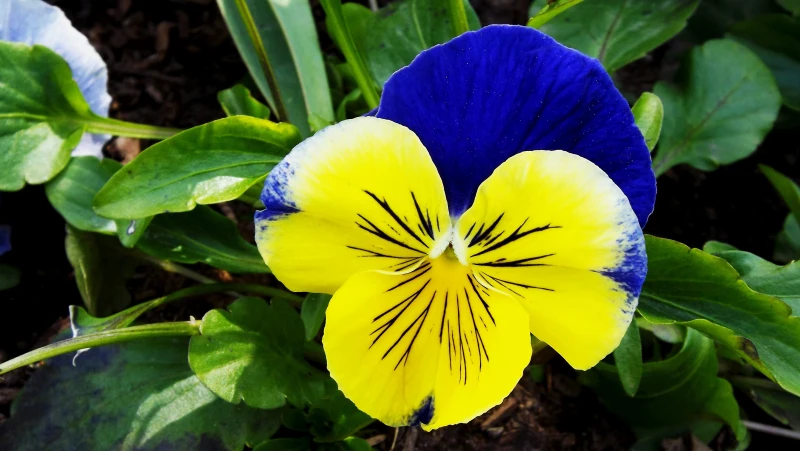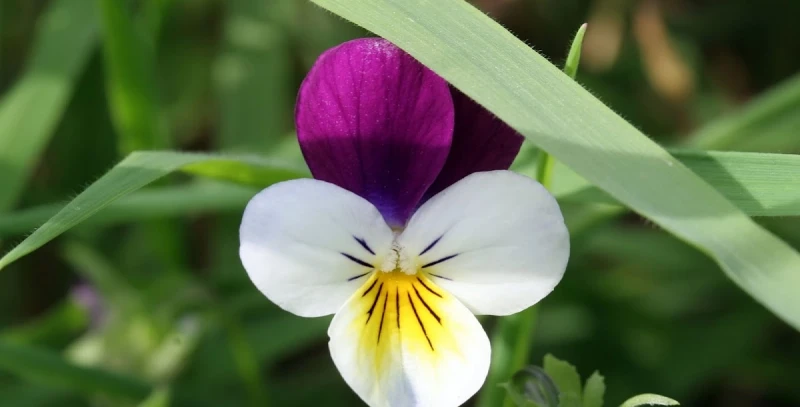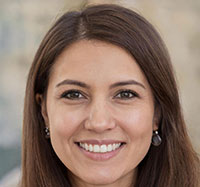Pansies are a popular garden flower known for their vibrant colors and delicate petals. However, these flowers hold a deeper meaning beyond their aesthetic appeal. In this article with Impeccable Nest, we will discuss the history, symbolism, and cultural significance of pansies.
What Are Pansy Flowers?

Pansies belong to the Viola family and are native to Europe and Western Asia. They are biennial or annual plants with heart-shaped, velvety leaves and five-petaled flowers that bloom in shades of purple, yellow, white, and blue. Pansies grow best in cool weather, making them a popular choice for fall or spring gardens.
The History of Pansy Flowers
The word “pansy” is derived from the French word “pensée,” which means “thought.” Pansies were first cultivated in the 19th century and quickly became a popular flower due to their hardiness and variety of colors. During the Victorian era, pansies were used to convey secret messages between lovers, with each color representing a different sentiment.
Symbolism and Cultural Significance of Pansies

Pansies have held various symbolic meanings throughout history and across different cultures. Here are some of the most common interpretations of the pansy flower:
Remembrance
In many cultures, pansies are associated with remembrance and are often planted on gravesites as a tribute to loved ones who have passed away.
Love and Affection
Due to their association with the French word “pensée” (thought), pansies are often linked to expressions of love and affection. Additionally, the heart-shaped petals of the flower further reinforce this interpretation.
Free Thinking and Creativity
In the 1960s, pansies became a symbol of the free-thinking and counterculture movements. The flower’s bright colors and whimsical appearance were seen as a rejection of traditional societal norms and an embrace of creativity.
Connection to Fairies
In Irish folklore, pansies were thought to have a special connection to fairies. The flower was believed to have magical properties that could protect against evil spirits and grant wishes.
How to Grow Pansy Flowers

Here are some tips for growing your own pansy flowers:
- Choose a location with well-draining soil and partial shade.
- Plant pansies in the fall or early spring for best results.
- Water regularly but be careful not to overwater.
- Deadhead spent flowers to encourage new blooms.
- Fertilize every two weeks with a balanced fertilizer.
Pros and Cons of Pansy Flowers
As with any plant, there are both advantages and disadvantages to growing pansies. Here are some of the pros and cons to consider:
Pros
- Pansies come in a wide variety of colors and are easy to grow.
- They are hardy plants that can withstand cooler temperatures.
- Pansies are often used as edging or ground cover due to their low-growing habit.
- They attract pollinators such as bees and butterflies to your garden.
Cons
- Pansies are susceptible to fungal diseases, particularly in humid conditions.
- They may wilt in hot weather and require consistent watering.
- Some varieties of pansies may be toxic to pets if ingested.
Alternatives to Pansy Flowers
If you’re looking for an alternative to pansies, here are some other flowers that share similar characteristics:
- Violas: A close relative of the pansy, violas have smaller flowers but are just as colorful and easy to grow.
- Primroses: These early-blooming plants come in shades of pink, purple, yellow, and white.
- Snapdragons: These tall, spiky flowers come in a variety of bright colors and are popular for cut flower arrangements.
Step-by-Step Guide to Planting Pansies
Here is a step-by-step guide to planting your own pansy flowers:
- Choose a location with well-draining soil and partial shade.
- Prepare the soil by adding compost or other organic matter.
- Dig holes that are slightly wider than the root ball of your pansies.
- Place each plant into its respective hole, making sure the top of the root ball is level with the soil surface.
- Backfill with soil and gently tamp down around the base of the plant.
- Water thoroughly and add a layer of mulch around the base of each plant to retain moisture.
Tips for Caring for Pansy Flowers
Here are some additional tips for caring for your pansy flowers:
- Deadhead spent blooms regularly to encourage new flowers.
- Water consistently but be careful not to overwater.
- Fertilize every two weeks with a balanced fertilizer.
- Watch for signs of fungal diseases such as powdery mildew or black spot, and treat promptly if necessary.
Comparing Pansy Flowers to Other Violas
Pansies are just one type of flower in the Viola family. Here’s how they compare to some other popular violas:
Johnny Jump Ups
- Smaller flowers with more delicate petals
- Come in a wider variety of colors, including bicolor options
- Tend to prefer cooler temperatures and may not tolerate hot weather as well as pansies
Violets
- Have smaller flowers that come in shades of purple, blue, and white
- Are often used as ground cover or in rock gardens
- May be less hardy than pansies and may require more consistent watering
The Best Uses for Pansy Flowers
Pansies are versatile flowers that can be used in a variety of ways. Here are some of the best uses for pansies:
- Garden Bedding: Plant pansies en masse in garden beds for a burst of color.
- Container Gardens: Pansies are excellent candidates for container gardening due to their low-growing habit and hardiness.
- Edging: Use pansies to edge garden beds or pathways for a polished look.
- Cut Flowers: Pansies make lovely cut flowers and can be added to arrangements for a pop of color.
Conclusion
Pansies are much more than just pretty flowers – they hold deep cultural significance and a rich history. Whether you’re planting them in your garden or giving them as a gift, understanding their meaning only adds to their beauty and charm.

Hey there! I am Salena Snyde, a dream psychologist with over 10 years of experience. I am the primary author of the Dream Meanings section on Impeccable Nest, where I not only share in-depth knowledge about the nature, function, and significance of dreams but also connect with readers through profound articles and quality information. With passion and a diverse knowledge of dreams, I have established strong connections with dream experts worldwide by reading articles and studying leading books on the subject. I believe that the combination of personal insights and sharing from the dream expert community can provide the most profound and comprehensive understanding for everyone.
